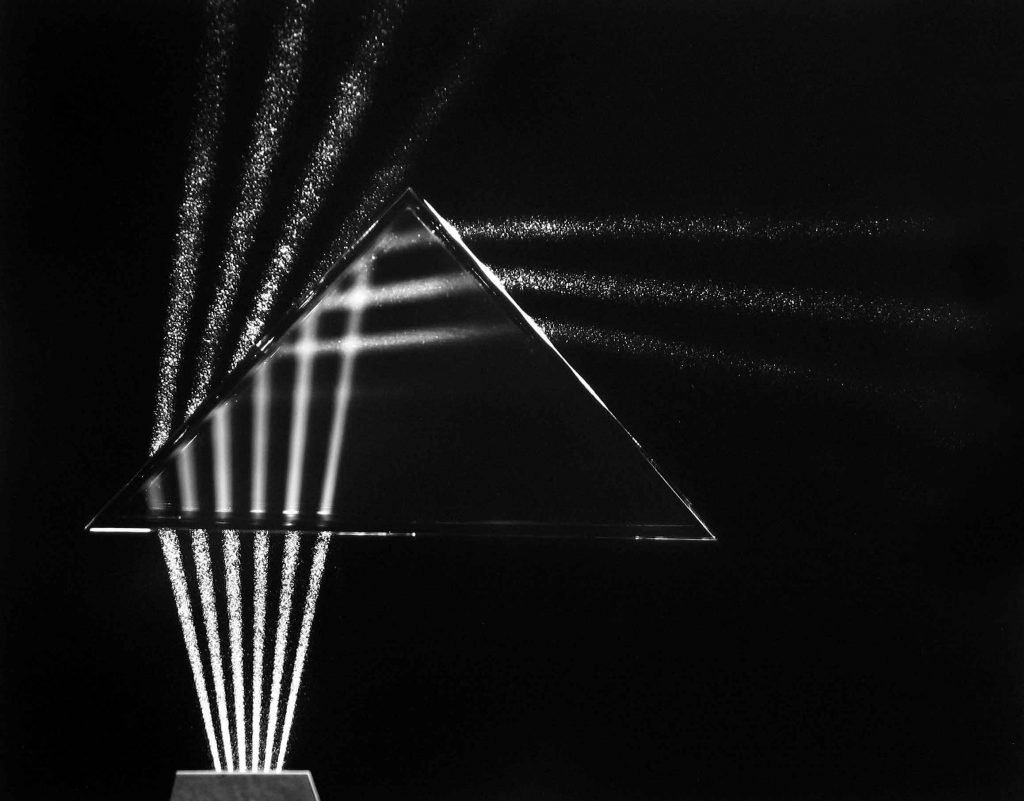Berenice Abbott began teaching at the New School for Social Research in 1935. When she was invited to teach a new course on photography, the school was pioneering its programme of adult education. She joined a prestigious faculty and encouraged other respected photographers also to teach at the school. By the time she left the school in 1958, Abbott had helped to make it a leading centre for education in photography. The contents of many of Abbott’s classes were published as a practical guide to photography in A Guide to Better Photography (1941). Abbott was also a fanatical inventor and established various photographic processes and equipment, some of which gained government patents. She began working on her ‘Super-sight Camera’ in 1942 with the aim of building a camera that allowed her to project an object enlarged onto light-sensitive paper. She wanted to gain the ultimate degree of image sharpness by avoiding the graininess caused by enlarging a negative. Another invention, the ‘Abbott Distorter’, contorted an image during printing, rendering it absurd with a nod to her early career with Man Ray and the Surrealists.
‘To me photography is a means, perhaps the best means of our age – of widening knowledge of our world. Photography is a method of education, for acquainting people of all ages and conditions with the truth about life today.’ – Berenice Abbott
In 1957 the Soviet Union launched Sputnik, the first artificial satellite, into space and the United States anxiously scrambled to keep pace with Russian scientific exploration. The Physical Sciences Study Committee (PSSC) at the Massachusetts Institute of Technology, Cambridge, launched a review into science education in schools and Abbott finally received the opportunity to undertake a long-pursued project to photograph scientific experiments when she was offered employment by the programme. Abbott moved to Cambridge and set up a studio with many of her own inventions. The PSSC wanted her to produce photographs that explained theories of science in a clear and accessible way to be included in science textbooks. Abbott was innovative and thorough in her conceptualisation of each image.
Abbott hoped that the effort needed to negotiate the images would lead to a better understanding of the scientific theories they represented. She took up abstraction as a mode of explaining the laws of quantum mechanics but in doing so reverted back again to her early experiences in Paris with the Surrealists. Man Ray often implicated theories of quantum mechanics and mathematics into his sculptures and objets trouvés. The abstract field of this new physics chimed with the Surrealists’ desire to depict the uncanny and alternative planes of experience.
Light through a Prism (c. 1958) is typical of Abbott’s attempt to simplify the complexities of quantum mechanics. Whereas the laws of classical physics considered matter to be composed of particles and that energy travelled on waves, the theories of quantum mechanics that emerged at the beginning of the twentieth century argued that matter and energy existed as both particles and waves. Abbott’s photograph explains this theory of wave-particle duality as the graininess of the beam of light outside the prism shows it to be made of discrete bundles of light that look as if they could break apart at any point. The brightening of the beams at the points at which they cross shows the pattern of reinforcement and interference.
Abbott argued, ‘Today science needs its voice. It needs the vivification of the visual image, the warm human quality of imagination added to its austere and stern disciplines. It needs to speak to the people in terms they will understand. They can understand photography pre-eminently.’ Whilst aesthetically unique from her earlier work, Abbott’s scientific work persisted with her belief that photography should always have a purpose and function. The photographs show a lifelong fascination with experimentation and technical innovation. During her lifetime, Abbott’s science photography was widely considered to be the work for which she would be best remembered
